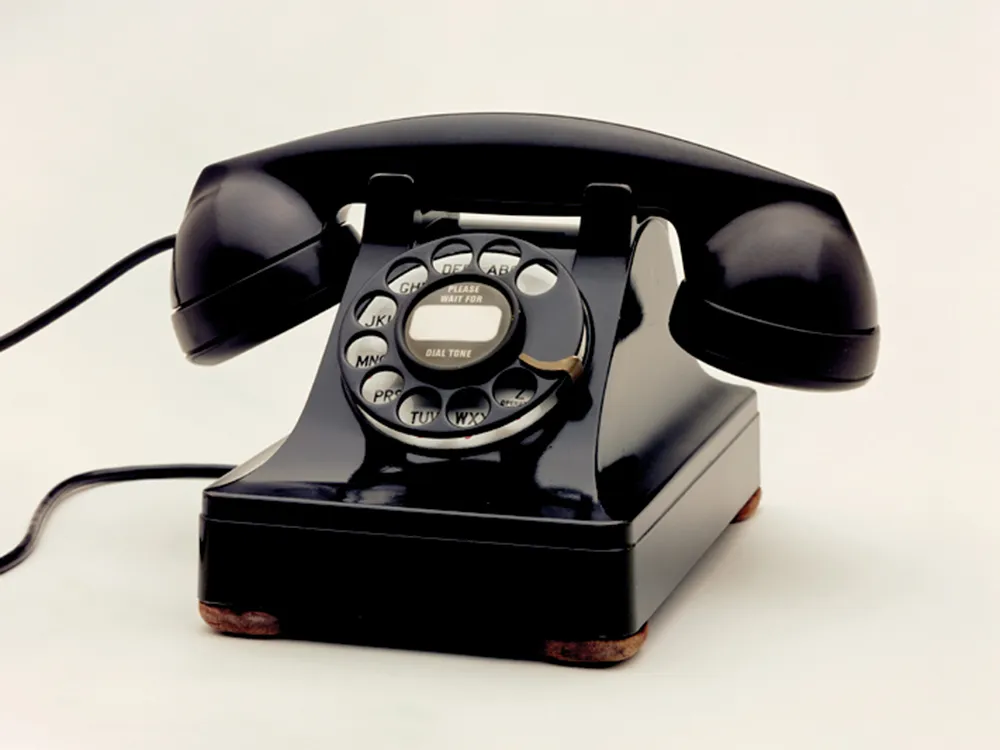
The telephone is a device that allows people to communicate over long distances using voice or other sounds. It is typically a handheld device with a mouthpiece and a receiver that can be held up to the ear. The telephone converts sound, usually a person's voice, into electronic signals that are transmitted through a network of specialized communication systems, such as the public switched telephone network (PSTN) or the Internet. The signals are then converted back into sound at the receiving end, allowing the recipient to hear the caller's voice.
The invention of the telephone revolutionized communication by enabling people to talk to each other in real time over long distances. It has had a significant impact on society, making it easier for people to stay in touch with friends and family, conduct business, and access emergency services. The telephone has also led to the development of many related technologies, such as call waiting, voicemail, and video conferencing.
There are different types of telephones, including traditional landline phones, cellular phones, and VoIP (Voice over Internet Protocol) phones. Cellular phones use wireless networks to communicate, while VoIP phones use the internet to transmit audio signals.
Basically, a telephone is a telecommunications device that allows two or more people to talk to each other over a distance.
The first practical telephone was invented by Alexander Graham Bell in 1876. Since then, telephones have evolved dramatically, from bulky landline phones to sleek smartphones that can do much more than just make calls.
Here's how traditional telephones work:
- When you speak into the phone, sound waves hit the microphone.
- The microphone converts the sound waves into electrical signals.
- The electrical signals travel through wires to the other phone.
- The other phone's speaker converts the electrical signals back into sound waves, so you can hear the person on the other end.
Today, most telephones use digital technology instead of analog signals. This allows for clearer sound quality and more features, such as call waiting and caller ID.
In addition to making calls, telephones can also be used for:
- Texting
- Sending and receiving photos and videos
- Checking email and social media
- Browsing the internet
- Playing games
- Using GPS navigation
Telephones have become an essential part of our lives, and they continue to evolve and become more sophisticated.
History of the Telephone
The history of the telephone unfolds like a captivating detective story, filled with rival inventors, groundbreaking breakthroughs, and a relentless pursuit of human connection across vast distances. While Alexander Graham Bell is often hailed as the inventor of the telephone in 1876, the journey to that iconic moment is woven with many threads.
Early sparks of electrical communication:
- 1833: German scientists Carl Friedrich Gauss and Wilhelm Weber ignite the flame with the first working electromagnetic telegraph, showcasing the potential of electrical signals for long-distance communication.
- 1854: Italian inventor Antonio Meucci builds the "telettrofono," a device capable of transmitting speech, though his lack of resources hinders public recognition.
- 1861: German inventor Philipp Reis constructs the "Reis telephone," transmitting sound using variable electrical resistance, but with limited clarity.
The race to patent the future of communication:
- 1876: The stage is set for a dramatic climax. Enter Alexander Graham Bell, working alongside his assistant Thomas Watson. The iconic sentence, "Mr. Watson, come here, I want to see you," echoes through history as Bell transmits the first clear voice message over a telephone. Just hours later, Elisha Gray files a competing patent for a similar device, adding another layer of intrigue to the story. Bell, however, secures the first official patent.
- 1877: The first commercial telephone exchange opens its doors in New Haven, Connecticut, connecting 21 eager subscribers.
Rapid evolution and a world connected:
- 1878: The first long-distance telephone line stretches between Boston and New York City, bridging the gap between distant voices.
- 1884: Thomas Edison's carbon microphone amplifies the sound waves, dramatically improving call quality and pushing the technology forward.
- 1915: The transcontinental dream becomes a reality as the first call connects New York City and San Francisco, shrinking the vast continent.
- 1927: The ocean barrier crumbles as the first commercial transatlantic service takes flight, allowing voices to reach across the Atlantic.
- 1947: The invention of the transistor opens a new chapter of miniaturization and affordability, paving the way for more accessible telephones.
Mobile revolution and a world in your pocket:
- 1973: Motorola engineers Martin Cooper and John Mitchell make history with the first mobile phone call, marking the dawn of a new era.
- 1983: The DynaTAC 8000x, the first commercially available mobile phone, hits the market, allowing conversations on the go.
- 1991: The Global System for Mobile Communications (GSM) network launches in Finland, ushering in the digital age of mobile telephony.
- 2007: Apple's iPhone redefines the mobile phone with its touchscreen interface and app store, transforming it into a multi-functional pocket computer.
An ever-evolving future:
Today, the telephone has transcended its original purpose. Smartphones connect us not just through voice, but through texts, video calls, the vast ocean of the internet, and a constant stream of information and entertainment. Virtual reality and holographic communication may even be glimpses into the future of telephony.
